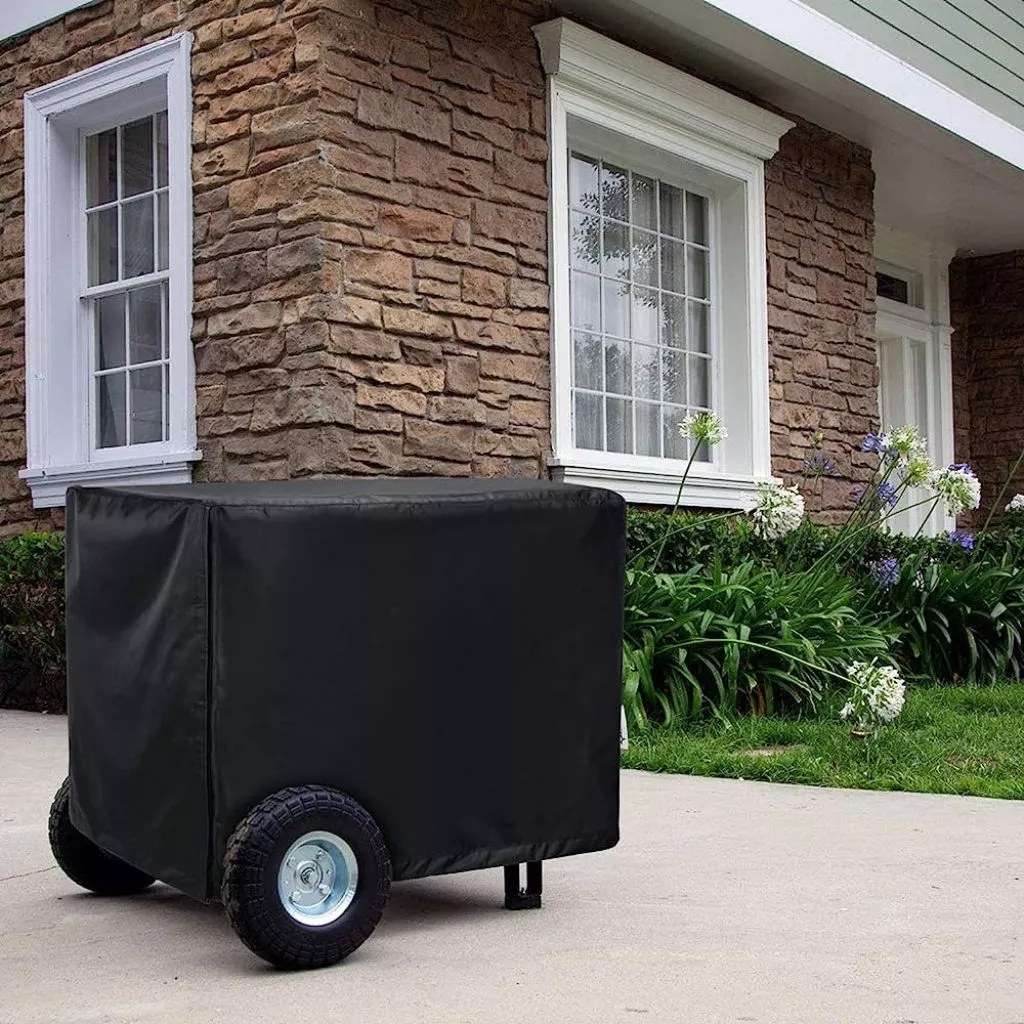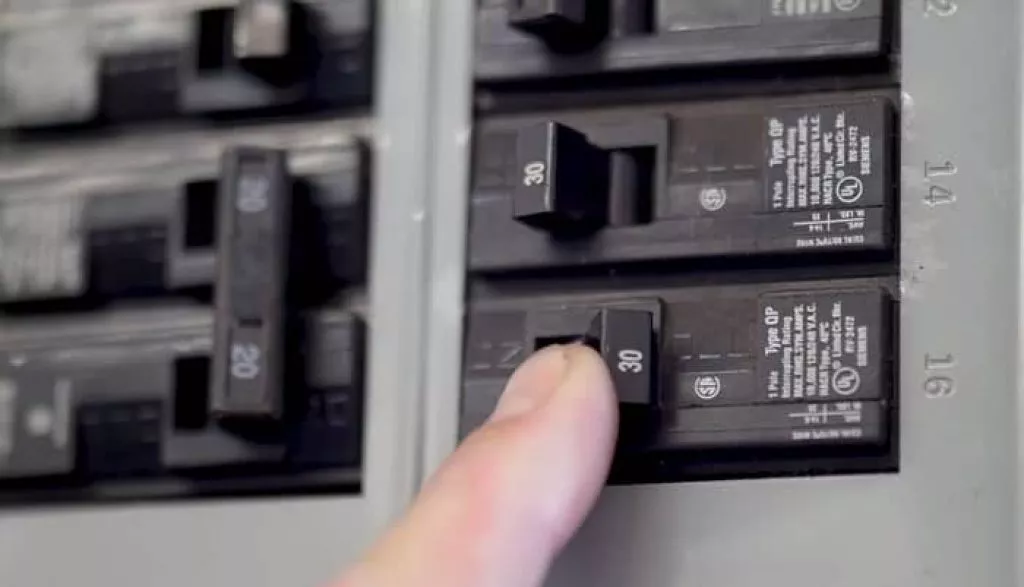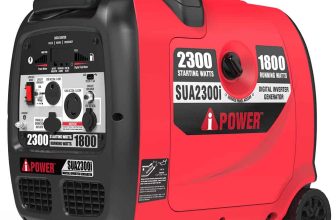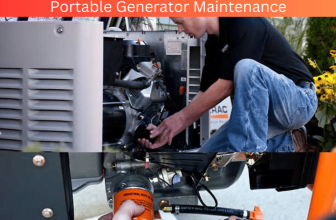Welcome!
If you’re one of many proud owners of a portable generator who understands its importance during power outages, then this guide is for you.

While this marvel device boasts reliability over time, certain glitches may require troubleshooting efforts on occasion, but don’t worry! This comprehensive guide delves deep into exposing common glitches that occur with portable generators while providing solutions that fix them effectively. Armed with these corrective measures and insight into what causes these glitches means that maintaining mastery over your device won’t be hard to achieve.
So join me as we explore ways to detect glitches quickly so that we can all enjoy uninterrupted power access courtesy of our trusty generators!
Troubleshooting Electrical Glitches
If you’re currently facing electrical glitches or complications with your generator, fear not! You have arrived at the right place for some guidance on solving this issue efficiently! Firstly, it would be best to ascertain that all connections are firm and secure by meticulously checking each ones proper placement while ensuring none of them is frayed or damaged- which could cause trouble later on. Additionally, verify that the battery is fully charged while operating perfectly fine too, otherwise, this could be a reason for malfunctioning of the generator.
Subsequently, focus on inspecting your switches and breakers’ condition carefully to ensure their optimal shape, manually resetting any tripped breakers by turning them off then on again might resolve glitches encountered here when necessary. After completing these steps without success in solving the issue – try plugging any device into an outlet nearby- perhaps there was just a loose connection somewhere causing glitches earlier than expected?
Finally, yet importantly, should no improvement occur despite these efforts exerted so far, move onto diagnosing mechanical problems or glitches as that might be the cause.
Diagnosing Mechanical Glitches
When it comes to mechanical fault finding on portable generators it seems that nothing is ever straightforward or easy. Luckily, we’re here with some helpful advice which should point you towards getting things sorted out quickly.
Firstly, do check the air intake and exhaust for any obstruction or glitches as these can significantly hamper the engines performance. Secondly, make sure that both fuel tank levels and oil levels are sufficient before attempting another start up sequence. Without having proper amounts of either will result in failure on startup.
In addition examine all electrical connections ensuring they’re fastened securely which could solve many glitches related to poor performance or degradation over time.
When these attempts fail at resolution, don’t fret! You may have an inherent issue with the machine itself. It may be necessary to take your generator into a repair shop for additional diagnoses.
There a proficient professional will undertake more detailed inspections and locate any deep seated glitches – fixing them accordingly!
Checking For Fuel Leaks

Now that you have identified that there’s some mechanical glitches with your generator, don’t forget to also check for possible fuel leakages. Locating these leaks may prove an uphill task, hence, its crucial to commit enough time to go through every part of your machine intently.
Your investigation should start by examining both the fuel line and tank exhaustively for cracks or holes. If any are present, you must replace them without delay. Additionally, lookout for indications of corrosion or oxidation on the fuel line and tank connections. Remove them using steel wool or sandpaper wherever necessary.
Furthermore, subject your carburetor to a close observation seek out any signs of wear or damage. Consider swapping it out for a new one if it has extensive damage accompanied by revamp requiring signs . Lastly, ensure all connections within your generators fuel system are firm and well secured since loose ones may allow leakage glitches to sprout up in future making things problematic further down the road.
With our fuel leak check complete we can move on to the next task: inspecting the air filter. It is important to check for any debris or dirt buildup that could potentially cause glitches down the line.
Inspecting The Air Filter
Keeping your generator running like clockwork means performing proper maintenance checks at frequent intervals – which includes inspecting its air filter regularly. Neglecting this step can lead to suboptimal results or worse yet- eventual breakdowns. So let’s get started right away!
Start by carefully removing the air filter lid and taking out the used up old unit from inside. Give it a once over checking for any buildup of dust or debris accumulated over time. If there are visible indications of filthiness, then it’s best to replace it entirely! Remember, always use a matching type of air filter for optimal results and then lock down everything securely after fitting in its new part.
By staying focused on routine upkeep measures like checking filters regularly, you’ll enjoy seamless generator operations for many years ahead! With that said now involves transitioning into replacing its spark plug as our next must do task.
Replacing The Spark Plug
Replacing your portable generators old spark plug is not rocket science – anyone can do it with ease. To get started, consult your manufacturer manual to guide you on identifying and taking out the worn out part, some tools could come in handy here. Once you’ve removed the old spark plug successfully, don’t forget to replace it with an identical replacement before adjusting its gap measurement. This step will assure you that your portable generator runs effortlessly without any technical glitches or breakdowns.
Fine tune between electrode distances on your new spark plug using a feeler gauge until achieving specifications recommended by your devices manufacturer. And before re-installing everything back together, thoroughly check that every detail meets specifications! Now that we’ve placed new spark plugs in our portable generators, let us carry out routine checks on their oil levels too! When it comes time to perform upkeep on your generator erring on the side of caution is always wise. Carefully consulting your manufacturers manual prior to undertaking any work will help protect against unintended damage or harm.
By following their instructions closely you can rest easy knowing that your generator is primed for peak performance year after year.
Checking The Generator’s Oil

A vital part of maintaining portable generators is taking care of their lubricating system safeguards – integral for both safety and optimization purposes during operation times. Thus, let’s now check in detail how well maintained our unit’s oil levels are:
Step 1: Switch off your machine while also giving sufficient rest time so everything can return to normal during cooldown period phases.
Step 2: Referencing user manuals can help locate which type(s) of lubricants work best for certain make and models so consult these helpful resources appropriately.
Step 3: After finding suitable lube supplies (oil) for use with this portable generator type/make/model, remove any existing debris from atop the dipstick using clean rags or paper towels before performing any measurements on said device.
Step 4: Re-inserting this component back into its respective slot will deliver accurate measurements regarding current fluid capacities within said unit so its best to pull out and gauge that soon after cleaning. Add more lubricants as needed until reaching capacity levels (as determined by “full” marks on said measuring stick). Make sure all caps are secure before starting your portable generator machine back up again! With this done we’re ready to move onto analyzing battery efficiency next.
Checking The Battery
If your generator is the heart of your operation, then its battery must be considered its lifeblood! Without it, energy and power generation would be impossible, therefore, regular check ups and maintenance of this vital component should never be overlooked! Start by making sure that the battery is properly installed and connected securely to its appropriate terminals on the generator unit.
If you come across any loose fittings or connection points – take matters into your own hands using wire cutters for maximum effectiveness. Next, grab hold of your multi-meter device for checking its voltage output. Doing this will confirm if there are any underlying glitches with how well (or not) your machine’s batter performs according to expectations! Should it fall short – don’t worry too much as batteries can be purchased affordably these days.
Once everything’s sorted out with the battery system – proceed with performing some essential voltage tests!
Performing A Voltage Test
As a user of portable generators ensuring its optimal functionality through regular maintenance procedures should be a top priority. One such process is conducting a voltage test – a crucial step in identifying possible electrical glitches associated with your machines components’ functioning ability. Consequently here are steps you can follow when conducting a voltage test:
Step 1: Unplug all appliances safely connected to the generator first before any testing commences
Step 2: Switch on the engine and let it run for an extended period – say fifteen minutes
Step 3: Use a multimeter and measure AC voltage readings. It’s vital that the readings are within twelve to fifteen volts of your home outlets reading. If not, check for possible glitches in wiring and alternator components that may be causing variations in readings.
Step 4: Make sure to shut off the engine along with disconnecting any necessary spark plugs to prevent any unwanted accidents during subsequent component testing. For accurate voltage test results, ensure you calibrate your multimeter correctly before use.
Moreover, use clean leads without visible signs of damage when connecting them to appliances and outlet receptacles for optimum performance. For accurate readings during a voltage test without any need for repetition, there are some precautions that must be taken. Verify proper grounding as well as any loose connections in both appliance and receptacle outlets beforehand. After ensuring this preparation is complete, focus on another critical operation that keeps your portable generator functioning smoothly – resetting circuit breakers with efficiency and safety in mind.
Resetting The Circuit Breakers

Kudos on passing that voltage test with flying colors! Now lets jump right into resetting those circuit breakers so we can really get this generator humming along nicely.
First order of business: hunting down that elusive circuit breaker panel. Depending upon what kind of generator you have access to at present this may require some extra sleuthing. Consult your trusty user manual for suggestions if necessary.
Once you’ve caught sight of the elusive panel in question though? Open her up and verify that all breakers are securely in place – if anything looks amiss take care to press any offenders back tightly into position so nothing jitters around loosely where it shouldn’t be.
If restoring normal functioning still proves elusive, try powering off all breakers before gradually reintroducing them one by one until things work properly once again. And should this method fail, it could be time to investigate ground connections more thoroughly. Make sure no pesky shorts or adverse factors are causing mischief with your generators performance levels here as these can cause quite a headache over time!
Verifying Ground Connections
The issue of portable generator ground connections is crucial as it can lead to deadly accidents if ignored. As such, we’ve put together this article to help you verify your generator’s ground connection accurately. However, before jumping into action, it’s essential first to have elementary knowledge in electrical wiring.
If unsure about anything or not qualified/ experienced enough, consider seeking assistance from a competent electrician in your area.
Now let’s proceed;
Step 1: Conduct visual checks on exposed wires or terminals carefully.
Step 2: Using a multimeter check continuity between the neutral terminal block and the frame.
Step 3: Verify grounding connection exists between both; frame and ground terminal by setting up multimeter in ohms mode.
When done with inspecting wiring systems here are some tests worth performing for safety assurance;
Make sure all necessary safety switches work correctly while checking that no glitches present themselves within engine or power supply circuits. Owning a standby or portable power source such as a generator is critical in todays world where power outages are unpredictable events that may occur anytime – causing inconveniences at home or work premises.
However/Yet/Still/ ensuring the optimal running condition/safety checks/regular maintenance checks are often overlooked by most people. Therefore, it is recommended that you inspect your generators fuel quality, oil levels air filters cleanliness and overall condition regularly. In the event of finding any glitches in any of these areas contact an authorized service provider right away for further guidance and/or repairs if necessary. Don’t take chances with safety- take these precautions seriously!

Frequently Asked Questions
How Often Should I Change The Oil On My Portable Generator?
Are you looking for ways to maximize your portable generator’s lifespan?
Well, look no further than routine oil maintenance! Experts recommend that every three months or after sixty hours of usage- whichever comes earlier- you should replace old engine oils with fresh ones.
To prevent any undesirable mechanical mishaps due to low lubrication levels caused by extended usage periods, frequent users should manually monitor their generators’ oils levels more frequently than usual.
Furthermore, make sure you adhere strictly to your vendor’s guide on appropriate types of oils necessary for optimal performance.
What Type Of Fuel Should I Use In My Portable Generator?
If you’re looking for uninterrupted power supply from your portable generator, the type of fuel you use plays an important role.
Always opt for fresh unleaded gasoline- compromise on quality at your peril! Using low grade or stale petrol could lead to several complications such as blocked filters or underwhelming engine output.
Avoid mixing different types of fuels with gas- such as diesel or kerosene -as this could be catastrophic for your generators longevity! Proper storage should also not be overlooked – ensure that you keep the fuel in a cool and dry place away from direct sunlight.
What Is The Best Way To Store My Portable Generator When Not In Use?
For those who hold university education dear, correctly storing their portable generators is of utmost importance towards maintaining peak performance levels.
Optimal conditions include keeping it in a cool and dry space devoid of direct sunlight. Think along the lines of garages or sheds. It’s essential to ensure this unit remains firmly in place on a flat surface during storage while avoiding rust by using an appropriate cover not prone to trapping moisture within its confines.
To further guarantee efficient function at all times, take the time before storage to thoroughly clean its exterior while examining for any potential oil or fuel leaks too! With these simple practices firmly implemented, users can rest easy knowing their generator is always set for action when called upon.
What Type Of Maintenance Should I Do To My Portable Generator Each Year?
Portable generators are an incredible blessing when you need backup power on demand.
But like most equipment that lies dormant for extended periods, they require some TLC to get back into working condition when needed. To ensure yours stays in tip top shape follow these simple maintenance tips each year:
Firstly, pay close attention to your fuel tank when checking for rust or corrosion – both of which can lead to expensive repairs down the road if left unchecked. Change out fuel filters as per manufacturers instructions and top off the tank regularly. Check oil levels as low oil can cause all kinds of problems with your generator. And while you’re doing that give the cooling vents a quick clean – a buildup of debris can negatively affect your units performance and lifespan.
The spark plugs and air filters are also essential parts that should never be neglected. These small yet important pieces need to be in good working order to ensure optimal performance when you need them most.
Finally, inspect cables for wear and tear – it is important to catch any early signs of damage before they become major glitches that affect your generators reliability. Once everything is re checked run the machine for a few minutes. This will give you peace of mind knowing there are no glitches with starting or running.
How Do I Know If My Portable Generator Is Running Correctly?
Portable generators are often essential tools for those who require consistent power supply in various locations and situations.
But how do you know when yours isn’t running correctly? Firstly pay close attention to any abnormal noises emanating from your machine – these can include rattling or grinding sounds which may signify deeper problems within its internal mechanisms. Turn off immediately if you hear such sounds and conduct further investigation before proceeding.
Secondly, look out for smoke emerging from your generators exhaust pipe, which is a clear indicator of engine issues.
Finally, keep an eye on fuel levels as they should be consistent with time. Any sudden drops could point to underlying inefficiencies in the fuel system.
Conclusion
Your portable generator may be compact in size but it packs plenty of power- making it essential that regular maintenance checks are carried out to ensure its continued efficient operation while minimizing any potential safety hazards.

This can easily be achieved by monitoring its oil levels, fuel type preferences and general condition while practicing proper storage protocols during periods of non-use. If you act diligently each year on these important steps towards upkeep there should be no reason why any common glitches cannot quickly resolved for optimal performance of your generator.
To those who have followed our guidelines, we hope that this has helped provide a better understanding to ensure a successful and safe experience -yet in any case, don’t hesitate to find expert assistance or guidance for peace of mind.






